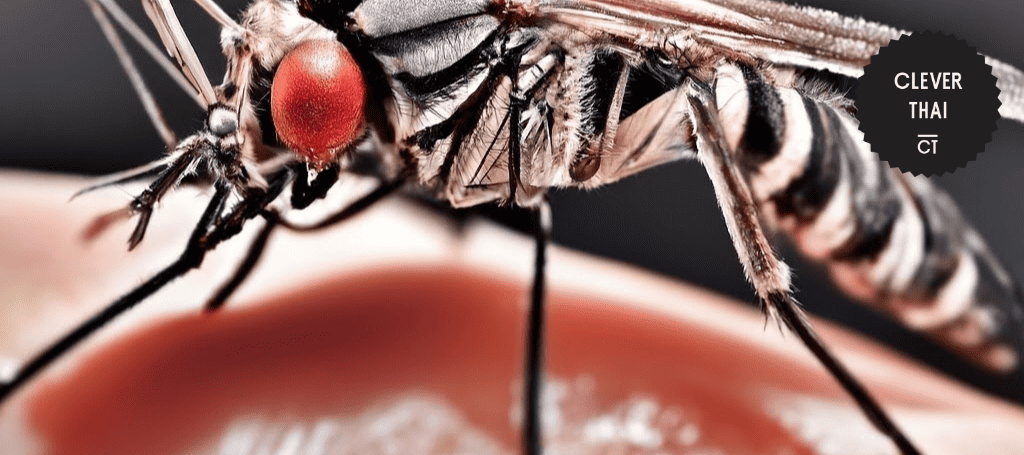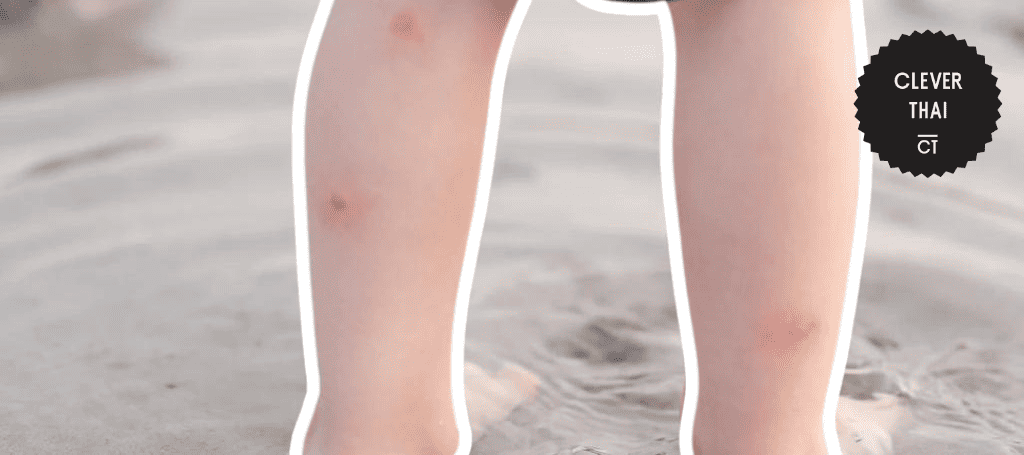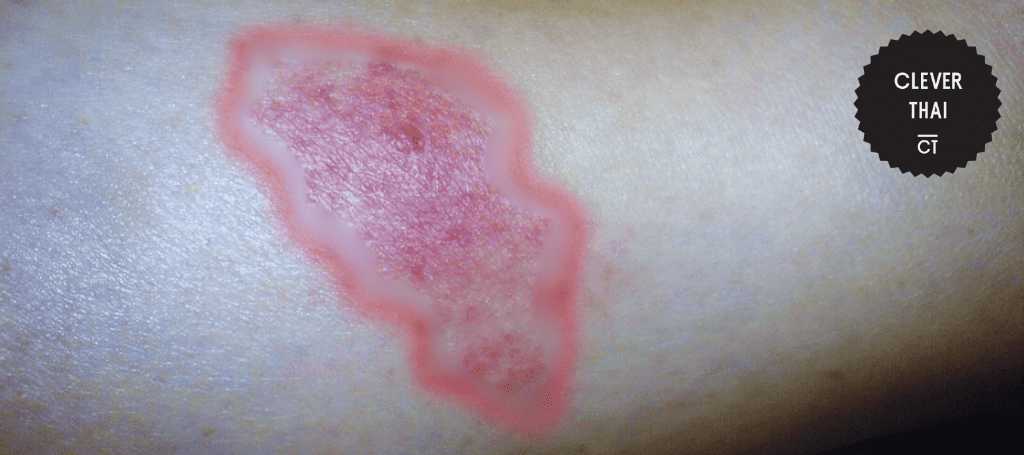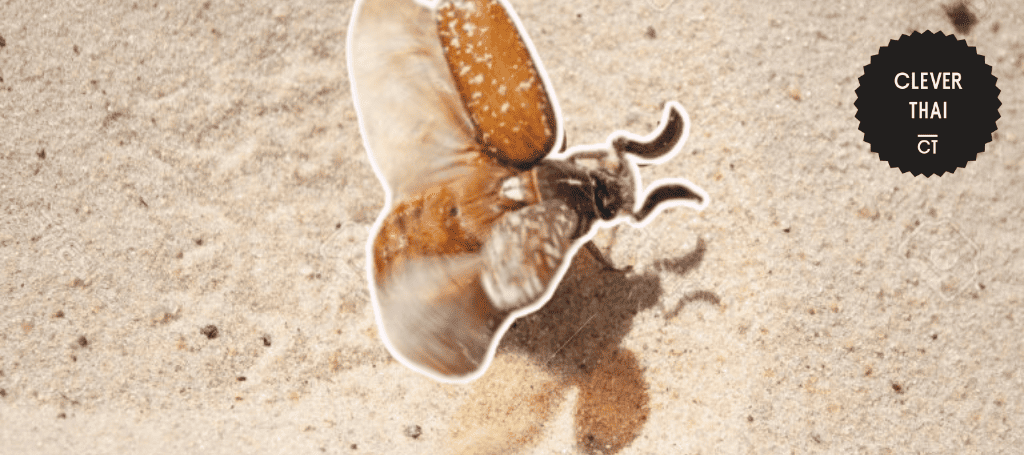Categories > Guides and Tips

Sandflies on Koh Chang: How to Avoid and Treat Bites
Koh Chang, a picturesque island in Thailand, is a destination renowned for its natural beauty and pristine beaches.
However, alongside its tropical paradise, visitors must also contend with a pesky adversary – sandflies. These tiny insects can leave behind itchy and uncomfortable bites!
So in this guide, we’ll explore the world of sandflies, offering insights into how to avoid their bites and effectively treat them when needed. Read on to fully enjoy your visit to Koh Chang!
How does one prevent and treat sandfly bites while in Koh Chang, Thailand?
To prevent sandfly bites while you’re in Koh Chang, Thailand, use insect repellent, wear long-sleeved clothing, and avoid outdoor activities during sandfly’s peak activity hours.
If bitten, treat the bites with over-the-counter creams or antihistamines to alleviate itching. In severe cases, seek medical attention.
What are sandflies?

Sandflies, scientifically known as Phlebotominae, are a family of tiny insects that belong to the Phlebotomus and Lutzomyia genera. Also known as sand fleas and sand gnats, and they’re mostly found in regions with sandy or marshy terrain.
These insects are quite small, usually measuring only about 1.5 to 3 millimetres in length, which makes them hard to spot.
Sandflies are also known for their potential to transmit diseases like Leishmaniasis, a parasitic disease that affects both humans and animals. In some Thai regions like Koh Chang, sandflies play a significant role in the transmission of this disease, making them a concern for public health.
Why do sandflies bite?

Sandflies bite for specific biological reasons, primarily driven by the need to reproduce and complete their life cycle:
- Blood Meal Requirement: Female sandflies require a blood meal to obtain essential nutrients necessary for egg development. This blood meal provides proteins and other nutrients that are crucial for the successful development of their offspring.
- Reproduction: After taking a blood meal, female sandflies are equipped to lay their eggs. This is a fundamental part of their reproductive process and ensures the continuation of their species.
- Feeding Behaviour: Sandflies are most active during the evening and nighttime, which is when they engage in their biting behaviour to obtain the sustenance required for their reproductive activities.
This behaviour aligns with the periods when their preferred hosts, including mammals like humans, are available for feeding.
What are the symptoms of sandfly bites?

Sandfly bites produce a series of symptoms, such as:
Itching
The itching resulting from a sandfly bite is often intense and can be quite bothersome. Sandfly saliva, injected into the skin during feeding, contains substances that can trigger an allergic reaction in many individuals.
This immune response is what leads to the itching sensation. Scratching the bite can exacerbate the itching and may increase the risk of infection.
Redness
A typical reaction to sandfly bites is the development of localised redness and inflammation at the site of the bite. This redness is often a visible sign of the body’s inflammatory response to the foreign substances introduced by the sandfly’s saliva.
Small, Itchy Welts
Sandfly bites often result in the formation of small, raised welts on the skin. These welts can be itchy, and they may resemble small blisters or hives. The size and appearance of these welts can vary depending on an individual’s sensitivity to the sandfly’s saliva.
Pain or Discomfort
While itching is the primary discomfort associated with sandfly bites, some individuals may experience mild pain or discomfort at the bite site.
This can be due to the physical trauma caused by the sandfly’s mouthparts during feeding or the allergic reaction to their saliva.
Delayed Reactions
One unique aspect of sandfly bites is the potential for delayed reactions. Hours or even days after the initial bite, some individuals may experience an increase in itching, redness, or discomfort.
This delayed response can be particularly frustrating, as it prolongs the discomfort associated with the bite.
How long do sandfly bites last?

The duration of sandfly bites can vary, but generally:
Short-Term Effects: In most cases, the immediate effects of a sandfly bite, such as redness, itching, and discomfort, typically last for a few days.
Varied Duration: The duration of sandfly bites can differ among individuals. Several factors can influence how long the bites persist. Individual factors include one’s immune response and sensitivity to the components of sandfly saliva.
Moreover, the specific species of sandfly involved in the bite may also play a role in determining the duration of the symptoms.
Up to a Few Weeks: While most sandfly bites resolve within a few days, some individuals may experience symptoms for a more extended period, lasting up to a few weeks. This prolonged duration is often associated with individuals who have an allergic reaction to the bite.
Allergic reactions can intensify the itching, redness, and discomfort, making the symptoms last longer. Additionally, if the bites become infected due to scratching or other factors, they may also persist for an extended period.
How can you treat sandfly bites?

To treat sandfly bites effectively and alleviate discomfort, consider the following methods:
Step 1: Wash the area
Begin by gently cleaning the bitten area with mild soap and water. This step helps reduce the risk of infection, especially if the skin has been broken due to scratching.
Step 2: Apply a cold compress
Applying a cold compress or ice pack to the affected area can help reduce itching and inflammation. Wrap the ice pack in a cloth or towel and apply it for short intervals, as prolonged exposure to cold can damage the skin.
Step 3: Put a topical cream
Over-the-counter creams that contain ingredients like hydrocortisone or calamine can be applied to the sandfly bites. These creams help relieve itching, soothe the skin, and reduce redness and inflammation.
Follow the product’s instructions for safe use.
Step 4: Take an antihistamine
Taking oral antihistamines, which are available over the counter, can provide significant relief from itching and help reduce allergic reactions associated with sandfly bites.
Follow the recommended dosage on the product’s label, and consult a healthcare professional if you have concerns about drug interactions.
Step 5: Avoid scratching the area
It’s crucial to resist the temptation to scratch the sandfly bites, even though they can be intensely itchy. Scratching can further irritate the skin, increase the risk of infection, and potentially lead to scarring.
Step 6: Seek medical attention if symptoms worsen
If the sandfly bites become infected, or if you experience severe or unusual symptoms, it’s advisable to seek medical attention. Signs of infection may include increased redness, swelling, warmth, or the development of pus at the bite site.
In such cases, a healthcare professional can prescribe antibiotics or recommend appropriate treatment.
How can you avoid sandflies in Koh Chang?

Use insect repellent
When exploring Koh Chang, especially in the lush and tropical evenings, apply a high-quality insect repellent to exposed skin. While there’s no foolproof sandfly repellent, trying different methods can help minimise the risk of getting bitten.
Here are some sandfly repellent options to consider:
- High DEET mosquito repellent: Consider using mosquito repellents with a high concentration of DEET for effective protection against sandflies.
However, remember that prolonged use of high DEET products may not be ideal for long-term health, as DEET is a potent chemical. Extremely high concentrations can be corrosive and harmful to plastic materials.
- Citronella: Citronella is a fragrant and natural option that can make you smell lovely while deterring sandflies. It’s a chemical-free choice, although it might not guarantee complete protection from sandfly bites.
- Vitamin B tablets: Taking Vitamin B tablets for an extended period can produce an odour in your body that sandflies and mosquitoes find unappealing. To see any effect, start taking these tablets a couple of weeks before your trip and continue during your stay.
- Dettol and baby oil Mixture: Mixing Dettol and baby oil can create a sticky barrier that some find effective against sandflies. However, this method might leave you with a hospital-like smell.
- Coconut oil application: Applying coconut oil to your skin is a popular and natural option to deter sandflies. The oil makes your skin sticky, which discourages sandflies from landing on you.
Keep in mind that you’ll smell like a tropical cocktail, and the oil may intensify sun exposure. Regular reapplication is necessary for continued protection.
Wear protective clothing
To enjoy your time on Koh Chang while minimising sandfly exposure, consider wearing long-sleeved shirts, long pants, and socks.
Koh Chang’s stunning natural beauty is worth the visit, but these clothing choices can help deter sandflies. Opt for light-coloured clothing to stay cooler in the island’s warm climate.
Avoid peak activity hours
Koh Chang’s charm extends into the evenings, but it’s also when sandflies are most active. To reduce the risk of bites, plan outdoor activities during the day and retreat indoors during dawn and dusk, which are prime sandfly hours.
Use bed nets
If you’re staying in accommodations on Koh Chang, particularly those closer to the lush forests, use bed nets to create a protective barrier while you sleep.
Ensure the nets are in good condition and securely sealed to prevent sandflies from entering.
Choose accommodations wisely
When selecting accommodations on Koh Chang, prioritise those that have screens on windows and doors. This not only helps keep the sandflies out but also allows you to enjoy the island’s refreshing ocean breezes.
Before settling in, inspect your accommodation for any gaps or openings that sandflies might exploit to gain access.
Keep lights dim
Bright lights can draw the attention of sandflies. On Koh Chang, where evenings are meant for relaxation, keep outdoor lighting to a minimum.
Consider using dimmer, yellow, or insect-repellent bulbs in outdoor areas to create a more peaceful and bite-free ambiance.





